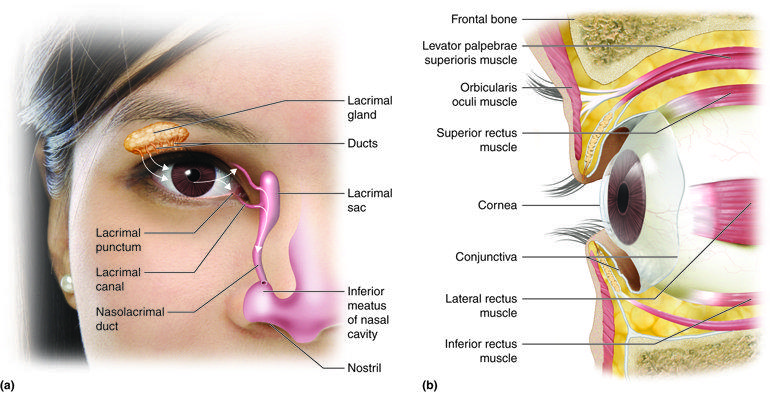Dry Eye
Dry eye is also known as “Xerophthalmia”. It is a common condition that occurs when your eyes do not produce enough tears or when the quality of tears is compromised. Tears play a crucial role in maintaining the health of your eyes by lubricating the surface and washing away debris. When the tear film is inadequate it can lead to discomfort, irritation, and even vision problems.

Symptoms of Dry Eyes
Identifying the symptoms of dry eyes is vital for early detection and timely treatment. The symptoms of dry eye include:
- Persistent dryness or grittiness in the eyes
- Redness and irritation
- Burning or stinging sensation
- Excessive tearing
- Sensitivity to light
- Blurred or fluctuating vision
- Difficulty wearing contact lenses
Causes of Xerophthalmia
Several factors contribute to the development of dry eyes. Following are some common causes of dry eyes:
Aging
When we grow older the production of tears tends to decrease making older adults more susceptible to dry eyes. Hormonal changes in women during menopause can also contribute to dryness in the eyes.
Environmental Factor
Environmental factors such as dry or windy climates, air conditioning and excessive screen time can lead to increased evaporation of tears that results in dry eyes.
Medical Conditions
Certain medical conditions can affect the production and quality of tears which can cause dry eye. Examples include diabetes, rheumatoid arthritis and thyroid disorders.
Medications
Some medications like antihistamines, decongestants, antidepressants, and hormone replacement therapy can cause dry eyes as a side effect.
Treatment Options for Dry Eyes
When it comes to managing dry eyes there are various treatment options available. The choice of treatment depends on the severity of your condition and the underlying causes. Following are some effective treatment methods:
Artificial Tears
Artificial tears can provide temporary relief by lubricating the eyes and replenishing moisture. It’s essential to choose preservative-free drops for long-term use.
Lifestyle Modifications
Simple lifestyle changes can significantly alleviate dry eye symptoms. Consider the following adjustments:
- Blink frequently especially when working on digital devices.
- Use a humidifier to add moisture to the air.
- Take regular breaks during activities that strain the eyes.
- Wear wraparound sunglasses to protect your eyes from wind and dust.
Prescription Medications
In more severe cases of dry eyes your eye care professional may prescribe medications such as cyclosporine. These medications help reduce inflammation and stimulate tear production.
Punctal Plugs
Punctal plugs are small devices inserted into the tear ducts to block drainage. By retaining tears on the eye’s surface, Punctal plugs can provide long-lasting relief for individuals with chronic dry eyes.
Intense Pulsed Light Therapy (IPL)
IPL therapy is a non-invasive procedure that uses pulses of light to target and treat the underlying cause of dry eyes. It can improve the function of oil-producing glands and alleviate symptoms.
Dry eyes can significantly impact your daily life and overall eye health. By recognizing the symptoms and understanding the treatment options available you can take proactive steps to manage this condition effectively. Remember, if you experience persistent dry eye symptoms it’s crucial to consult with an eye care professional for a comprehensive evaluation and personalized treatment plan.






